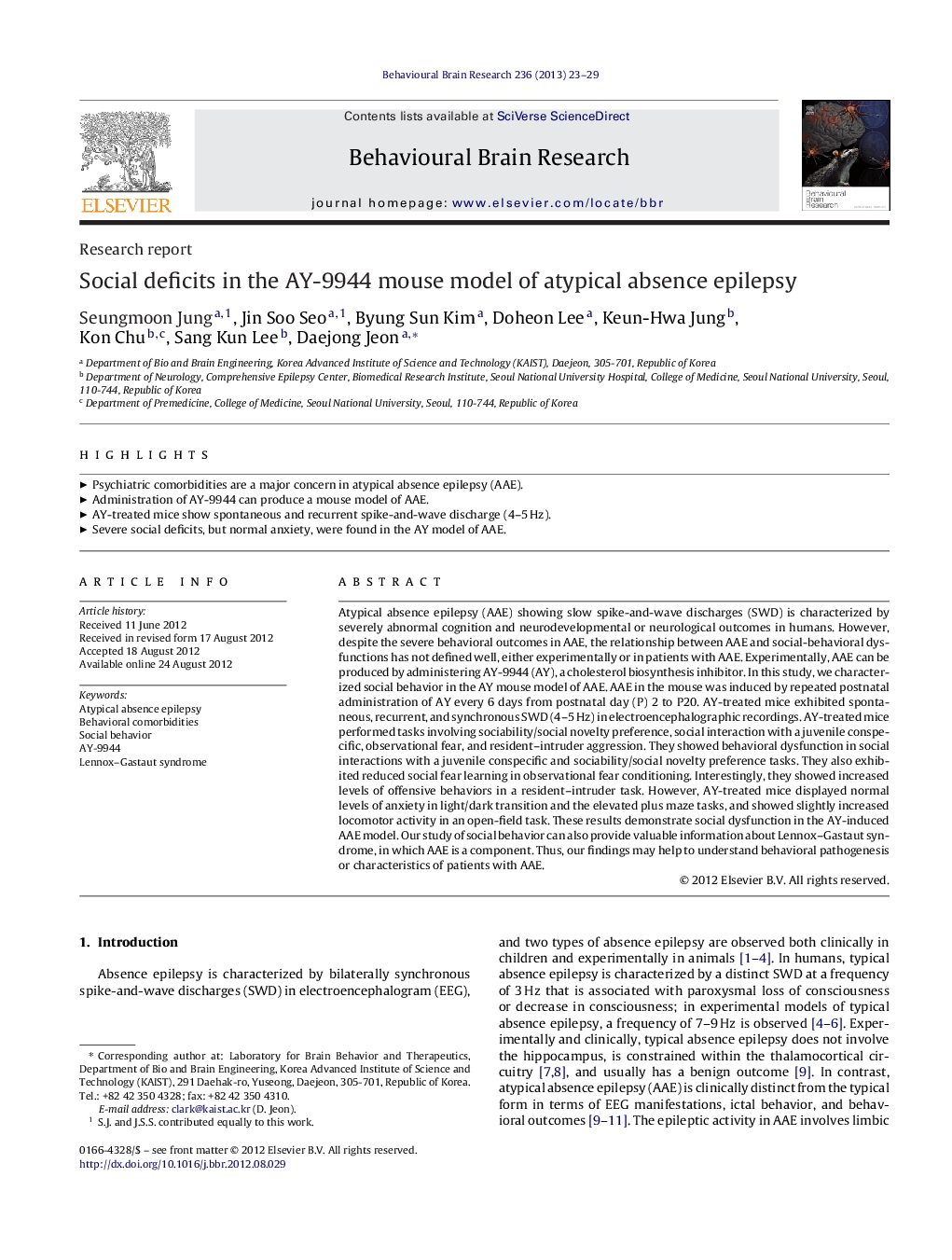| کد مقاله | کد نشریه | سال انتشار | مقاله انگلیسی | نسخه تمام متن |
|---|---|---|---|---|
| 6259429 | 1612996 | 2013 | 7 صفحه PDF | دانلود رایگان |

Atypical absence epilepsy (AAE) showing slow spike-and-wave discharges (SWD) is characterized by severely abnormal cognition and neurodevelopmental or neurological outcomes in humans. However, despite the severe behavioral outcomes in AAE, the relationship between AAE and social-behavioral dysfunctions has not defined well, either experimentally or in patients with AAE. Experimentally, AAE can be produced by administering AY-9944 (AY), a cholesterol biosynthesis inhibitor. In this study, we characterized social behavior in the AY mouse model of AAE. AAE in the mouse was induced by repeated postnatal administration of AY every 6 days from postnatal day (P) 2 to P20. AY-treated mice exhibited spontaneous, recurrent, and synchronous SWD (4-5Â Hz) in electroencephalographic recordings. AY-treated mice performed tasks involving sociability/social novelty preference, social interaction with a juvenile conspecific, observational fear, and resident-intruder aggression. They showed behavioral dysfunction in social interactions with a juvenile conspecific and sociability/social novelty preference tasks. They also exhibited reduced social fear learning in observational fear conditioning. Interestingly, they showed increased levels of offensive behaviors in a resident-intruder task. However, AY-treated mice displayed normal levels of anxiety in light/dark transition and the elevated plus maze tasks, and showed slightly increased locomotor activity in an open-field task. These results demonstrate social dysfunction in the AY-induced AAE model. Our study of social behavior can also provide valuable information about Lennox-Gastaut syndrome, in which AAE is a component. Thus, our findings may help to understand behavioral pathogenesis or characteristics of patients with AAE.
⺠Psychiatric comorbidities are a major concern in atypical absence epilepsy (AAE). ⺠Administration of AY-9944 can produce a mouse model of AAE. ⺠AY-treated mice show spontaneous and recurrent spike-and-wave discharge (4-5 Hz). ⺠Severe social deficits, but normal anxiety, were found in the AY model of AAE.
Journal: Behavioural Brain Research - Volume 236, 1 January 2013, Pages 23-29